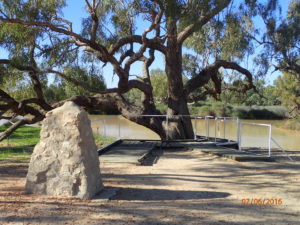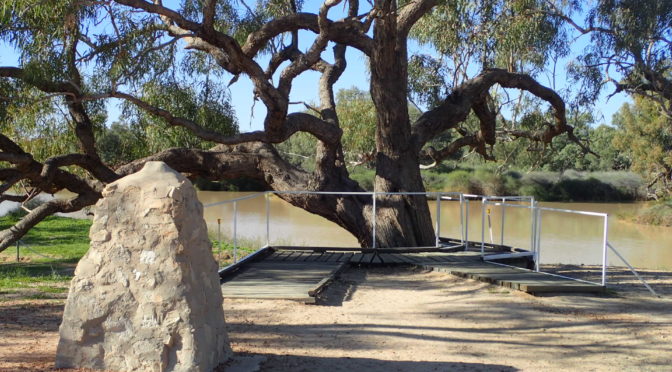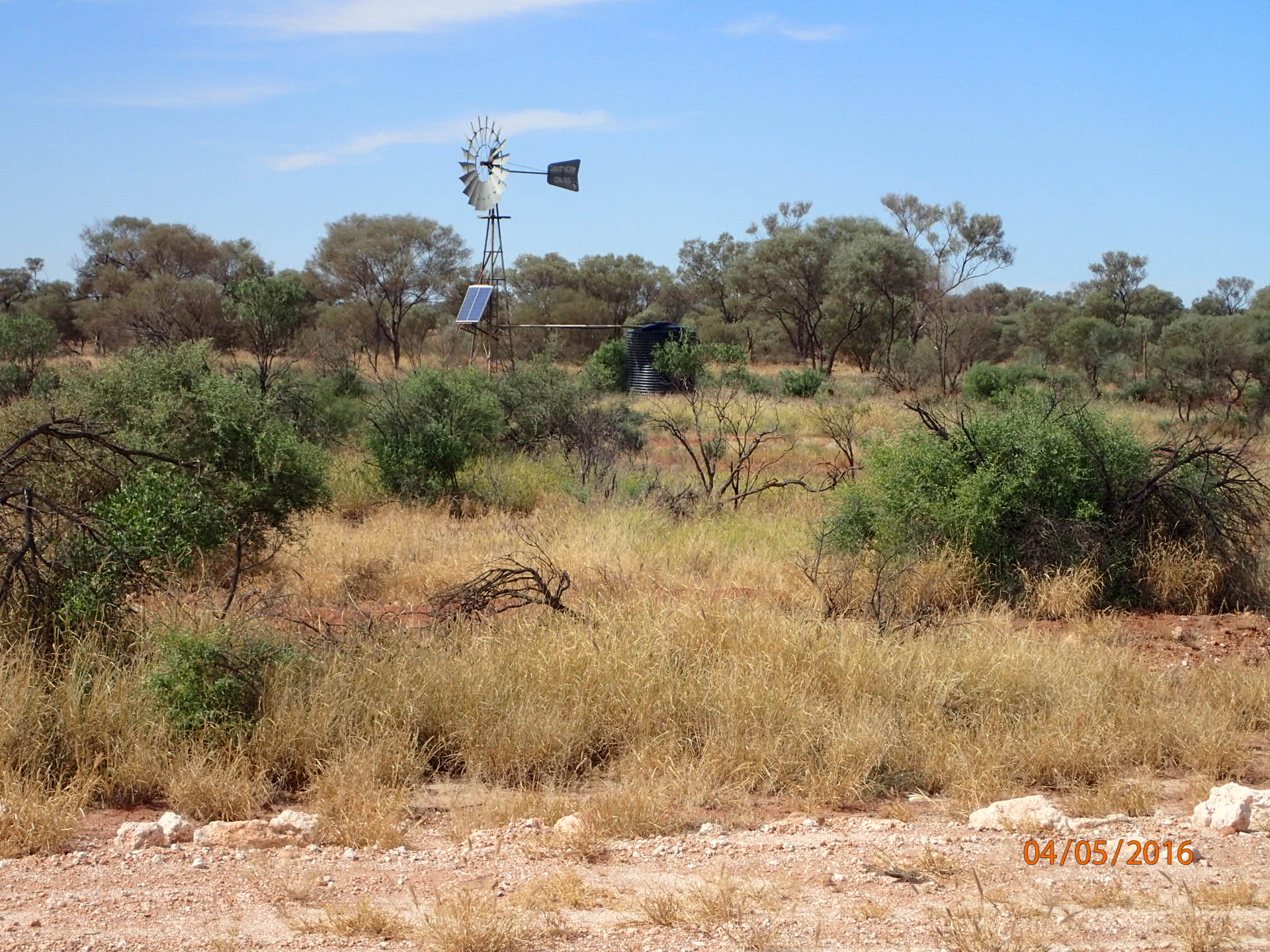Without water there is no ride.
From experience I know that life is very unpleasant in as little as 5 km without water in warm weather.
Explorers have died because they didn’t have it (Hume, maybe Leichardt), or couldn’t leave their one source (Burke and Wills), or became heroes because they could find it and travel when others could not (Eyre, Giles, Forrest, Stuart).
Always know where you are going to get water!
From creeks small to large;

Burke and Wills ‘Dig Tree’on the Cooper Creek. Beyond this creek are hundreds of kilometres of plains without permanent surface water.
From waterholes – when they haven’t dried out


From bores on farms and stock routes (bores tapping the Great Artesian Basin are often salty, shallower bores into near surface aquifers are usually fresher).

Swimming holes and surface water near campsites is often polluted by human gut waste (poo)

Shallow puddles left by storms in isolated areas is unlikely to be polluted by people and has likely been sterilized by exposure to days of harsh ultraviolet light

How much water?
I made sure to leave camp with enough water to go at least one day (including overnight camping) beyond where I expected to get my next water.
For long desert stages I worked on a minimum of 5 litres of water a day (up to 8 litre if it was warm/hot and remember that you will ride slower in these conditions).
I could carry 15 litres of water when leaving a water source:
- 3 x 1 litre bidons
- 4 x 3 litre PET fruit juice bottles (very tough, shatterproof, easily replaced)
Water sources
Hygiene
Any bush water may be polluted by micro-organisms or by chemicals.
The worst source of pollution is people and their gut wastes (poo). Try to avoid water from downstream of camp grounds, creek crossings, towns etc. as it may be polluted by human waste.
Animals can also pollute water by defaecating and urinating into it. The range of diseases humans can catch from domestic stock and their feral relatives is enormous and includes leptospirosis, brucellosis, Q fever, tapeworms, nematode worms etc. etc. Ehh! What are you going to do? Try to be careful, boil or sterilise water where possible and use the best sources you can.
I have only had problems with bush water supplies on two occasions; once when I had to drink from a billabong surrounded by campervans and secondly when I drank directly from a clear runnng creek and looked up to see a rotting kangaroo carcass in the water a metre away. Neither caused more trouble than a few days diarrhoea. You may not be so lucky.
Best:
Drinking fountains in parks/Roadhouses/public toilet tap
Adequate:
Rainwater tanks
- often on roadside stops/around sheds etc; be respectful and make sure taps are turned off fully
-
Stockwater
Cattle particularly need lots of good quality water; if you are in cattle country there will be drinkable water within a few kilometres (probably less than 8 km and likely within 2 km).
Stockwaters may be in tanks (at stockyards, near bores and supplying pipe networks), cattle troughs (get from the spigot near the float often under a hood), or open dams. Look for two wheel rut tracks heading into the bush and that look like they are used approximately weekly – these could be farm bore-runs leading to troughs or tanks.
- good quality stock water is from bores tapping sand aquifers near creeks or near sand hills and so is prefiltered
- acceptable from rocky ridges,
- sometimes acceptable from dams (especially if fenced), larger streams and lakes or billabongs
- marginally acceptable from smaller dams and muddy creeks
Other sources
- roadside borrow pits- small quarries used for sourcing road base, water is often good if a little muddy as are filled by runoff from the compacted road surface
- puddles on open ground – recent rain will leave shallow puddles on gibber plains, stony ridges and in clay pans – in the absence of a source of (human, cattle, pigs) contamination the water in these puddles will have been sterilized by exposure to days of UV in sunlight and will be OK.
- underground in creeks and permeable soils – most Australian creeks and water courses are ephemeral, that is, water flows in them only immediately after rain. Water may still be available underground in their beds however. To get this water dig a hole (how deep depends on what the site looks like, if dampness is felt in the hole, and how keen you are) in sandy areas where an impermeable perching layer is likely at moderate depth. Such areas are immediately downstream of small waterfalls or rock bars, on the outside of creek bends, or in the lowest part of a broad shallow depression. Explorers and aborigines often depended on this ‘invisible’ water and got it by digging a hole as deep as possible in likely areas. Even if water does not fill the hole immediately, even damp soils may eventually yield free water if left open for several hours.
- solar stills, cutting tree stems, fleshy tubers and etc. This is getting desperate. How did you get into this situation? Many travel guides suggest carrying a large clear plastic sheet (such as 2m x 2m) that can be used to capture and condense water evaporaing from an attached leafy tree branch, piles of green leaves or simply from damp soil. Some water will drain from the bottom of long branches/roots/stems of trees if the leafy top is removed and the stem progressively cut shorter from the top end. All of these methods are hard work and don’t yield a lot of water. They should not be depended on for routine water supply. DO NOT GET INTO THIS SITUATION


